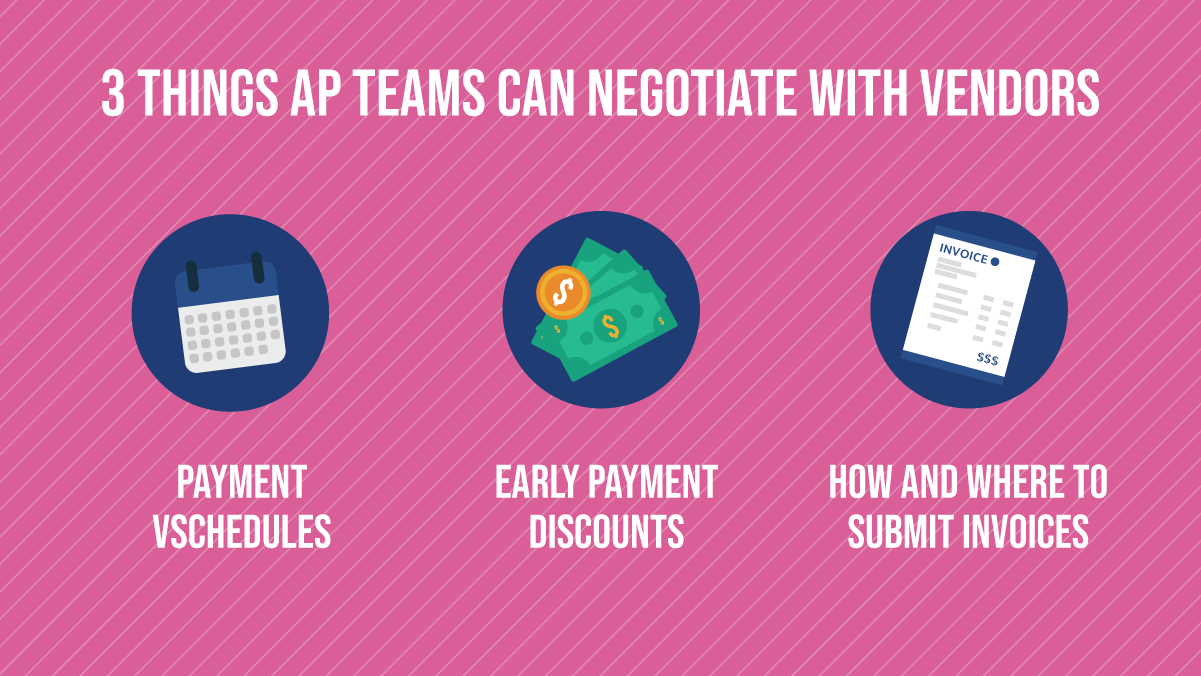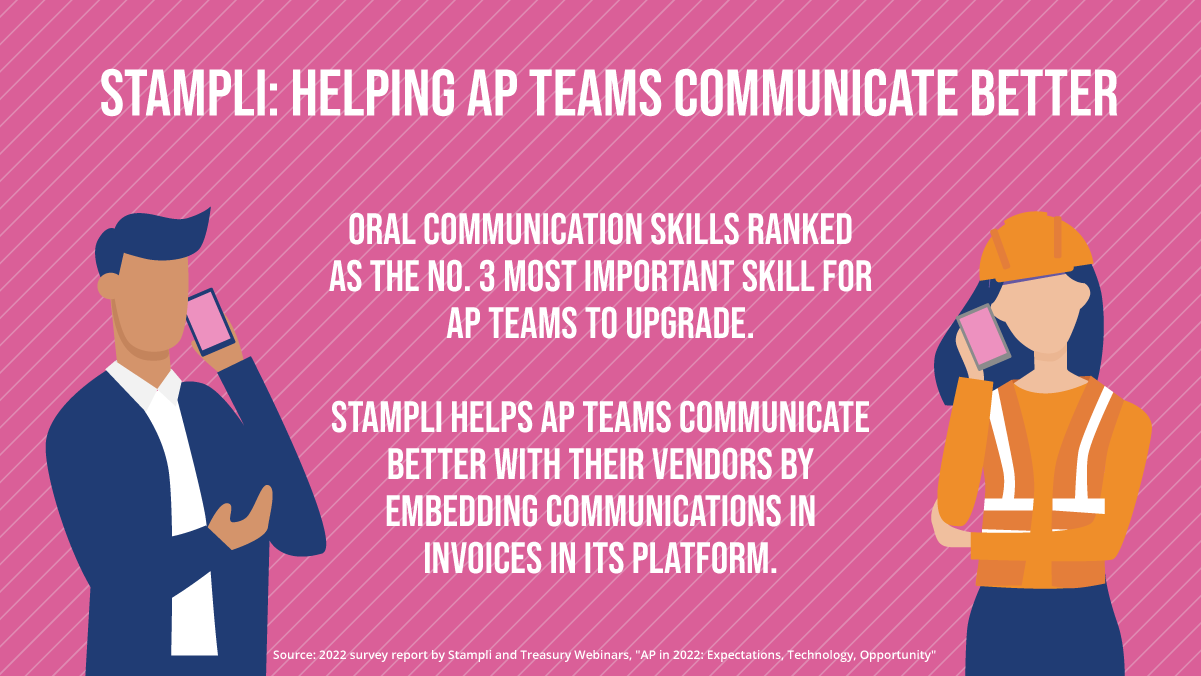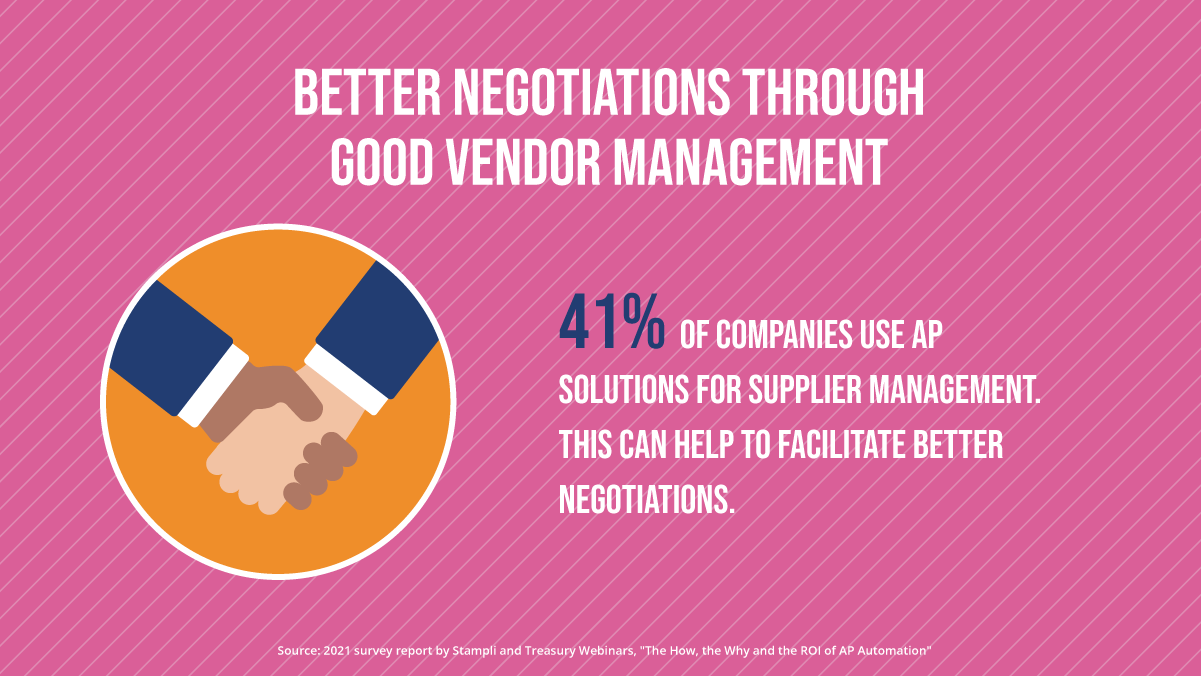How to Negotiate with Vendors: Why AP Automation is Essential

In accounts payable, as in life, many things are negotiable with vendors. But negotiation can be tricky to companies or entrepreneurs untrained in the process. AP departments might not know what they can or should ask for. Conversely, companies can become overzealous and burn an otherwise good relationship with a vendor by trying to force unrealistic lower prices and other conditions.
Accordingly, knowing how to negotiate with vendors can be a critical component of business and accounts payable success.
This post looks at what it takes for accounts payable to become successful in negotiation with vendors, from basics to different strategies to how technology from partners like Stampli can help. Join us as we explore everything a company should know in order to negotiate with vendors.
Basics of How to Negotiate with Vendors
First, let’s get a few basics established for how to negotiate with vendors.
Why it’s Important to Learn How to Negotiate with Vendors
Every interaction in accounts payable can present an opportunity for negotiation, even if it might not seem like it. As such, AP departments might be in frequent negotiations with their potential or current vendors, even unknowingly, on everything from down payment and delivery terms to scopes of work and goods production.

Without a good handle on how to negotiate with vendors, companies, entrepreneurs, an AP department can run the risk of having less-than-desirable payment schedules and terms for goods or services. They might not receive optimal delivery timetables, either. There’s also the risk of an unskilled negotiator pushing too hard for the lowest prices and alienating vendors. As one author notes, “If you push a negotiation too far and you push the other side too hard and too fast, you risk not only losing the deal, but also isolating and distancing potential future business.”
Respectful price negotiations can forge a win-win for both AP teams and vendors. These positive interactions allow companies – everyone from small businesses and startup operations to enterprise-level firms – to receive goods or services at prices and warranty terms that optimize their bottom lines, while also ensuring that vendors aren’t cut to the bone. Good negotiations keep all sides happy and pave the way for long, fruitful working relationships.
What to Shoot For (and What to Avoid) in Negotiations
In negotiations, the middle path is often best. Going to either extreme – trying to steamroll a vendor or letting them dominate the negotiations – can create imbalances that threaten long-term working relationships. It can also cause problems down the road, long past the point of working together, such as a negative review online.
The middle path gets both AP departments, vendors, and even business owners to the table and opens the door to everyone benefiting from a transaction. It’s about fostering respectful and productive dialogue and creating the potential for a fair exchange and reasonable payment terms for AP departments.
Negotiation might seem to some people like a zero-sum game, where there must be a clear winner and loser. Trying too hard to get the upper hand is misguided, though. A better approach is to try to create value for both sides, with one author noting, “The zero-sum fallacy is a fallacy because it is a false belief. Unfortunately, it is a belief that can be self-fulfilling. If you believe there is no alternative but to split a fixed-pie, then you may fail to look for places to create value. That is a real mistake.”
It’s also a mistake during a pandemic, when companies and their supply chains face heightened levels of stress. Supplier relationships thrive, especially during tough times, with a focus on both sides benefiting.
The Tools You’ll Need for Vendor Negotiations
A good negotiator arrives at a negotiation with a variety of negotiating skills and tools. Business owners need to possess skills for each stage of the negotiating process, from being able to make a good first offer to a counter-offer to knowing the nuances of contract negotiation. This holds as true for small businesses or startups as it does for major corporations.
A successful negotiation can also hinge on certain intangible and internal tools, such as a belief in the value of working with one’s AP department, why it’s good to do business even during something like a pandemic, and clear knowledge of what terms AP teams will need from their vendors. Going into negotiations without these things can create the potential for unsustainable working relationships or a bad long-term contract.
There’s also the work done ahead of negotiations, such as researching typical industry payment terms, identifying other potential providers, and seeing what companies who’ve worked with the vendors have said. Most of this work can be done online, free of charge, though companies with deeper budgets can also look to commission market research or focus testing. These efforts can provide actionable data.
Beyond this, a broad range of technological tools can also be used to assist vendor negotiations. We’ll explore more about what some of these tools are in a bit.
4 Vendor Negotiation Strategies to Consider
There are probably countless vendor negotiation strategies that can be deployed in any number of different business scenarios. Here are four worth considering in the context of accounts payable.
1. Prioritizing Clear Communication
Good lines of communication are vital during negotiation and these lines can come in a variety of forms. A UCLA professor coined the concept of the 7-38-55 rule in 1971, suggesting that 7% of communication is verbal, 38% is voice tone, and 55% is body language. And this was, of course, decades before the proliferation of the internet made written communication exponentially quicker.
AP departments will want to do whatever they can to foster clear communication through the course of negotiations with their supply chain and vendors. This can mean being mindful of verbal, voice tone, and body language cues. It can also mean having open channels of communication through a variety of technologies or software, such as Slack channels, social media such as LinkedIn, or customer relationship management software.

The importance of effective communication is well-understood in accounts payable, with oral communication skills ranked the No. 3 most important skill for AP teams to upgrade this year in a new survey whitepaper from Stampli and Treasury Webinars, “AP in 2022: Expectations, Technology, Opportunity.”
2. Offering (and Asking For) Incentives with Your Vendor
Accounts payable teams might be loath to offer anything up in negotiations, maybe seeing it as a sign of weakness or a guarantee they won’t get a better price. On the contrary, it can foster goodwill.
For instance, many companies might desire the absolute longest possible payment terms with their vendors, say 3-6 months to pay an invoice. But with the American rate of inflation at 7% as of December 2021 and increasing at its fastest rate since 1982, waiting several months to pay a vendor might present a serious hardship for them, tying up their money and preventing the funds from being put to use elsewhere. An AP department that strives to pay its bills sooner might find that it has a grateful coterie of vendors.
Of course, incentives can and should cut both ways. Many vendors will grant 1-3% discounts if a company can pay a bill quickly, which can help cash flow. Which would require an efficient invoice management process to help keep track of all your invoices. While historically some vendors have resisted giving these discounts, the current rate of inflation might be making the conversations a bit easier.
3. Having a Backup Option
Being willing to leave the negotiating table when necessary is one of the most important parts of business. This extends to accounts payable departments as well.
Some potential suppliers simply will not be a good fit. They might insist on overly aggressive payment schedules or specifications. Or they might only want a certain type of payment, say ACH payments, when a company generally prefers to pay by paper check. (This isn’t to say there’s a right or wrong way to pay a bill, by the way, just that it’s good when companies and their vendors are on the same page about how payment should go down.)
One of the nice things with business, especially in the age of the internet, is that there’s usually another supply chain option. Should potential suppliers ultimately not be amenable, it can be time to reach out to others, though it’s not bad to have options identified ahead of time.
4. Deploying Technology like AP Automation to Ease Your Burden
Many AP departments might still be doing their work by hand, from entering invoices into their accounting systems to making payments. The word’s gotten out in recent years that accounts payable automation technology can help companies process invoices far more quickly and cost-effectively, with fewer errors to boot. The technology can also ease vendor negotiations.
The reason that AP automation can help ease negotiations with vendors is due in part to the tools provided. We’ll detail more about these momentarily.
How Stampli Eases Vendor Negotiations
Many AP departments would probably love to find an easier way to negotiate with vendors. Here are some of the ways that Stampli helps to make this happen.
A Custom Vendor Portal for Your Vendors
We offer end-to-end invoice processing for AP teams, helping them control the process from the moment they receive an invoice to when they’re doing daily or monthly reconciliations. But we also have tools to ensure that vendors are part of this process. One of them is the custom vendor portal that we provide.
After vendors send you invoices, they are are able to see the status of their invoices if you enable the vendor portal setting. We haven’t mentioned this so far, but a lot of vendor negotiations occur when they’re peppering AP teams with emails or phone calls wondering why they haven’t been paid. Stampli’s custom vendor portal can reduce these time-consuming queries, both by providing up-to-date information and by considerably shortening the time that it takes for an invoice to be processed.

A 2021 whitepaper by Stampli and Treasury Webinars, “The How, the Why and the ROI of AP Automation” found that 41% of companies were already utilizing AP solutions for supplier management. It’s not hard to see why more and more companies are getting onboard with the use of automation, that’s because it helps facilitate better negotiations.
An Easy-to-Use Platform for All Involved
Stampli is beneficial for AP teams and vendors because it is ease of use, provides transparency when AP enables the vendor portal, and vendors can be invited to invoice communications which all help with building rapport.
The platform doesn’t require a programmer’s knowledge to work, with the system’s optical character recognition, artificial intelligence, and machine learning capabilities can handle a lot of grunt work and speed the P2P process along.
Both AP teams and vendors can feel refreshed and engaged when they use Stampli, and that can help keep negotiations running smoothly.
Get a free demo of Stampli and check out how it improves your relationships with vendors.